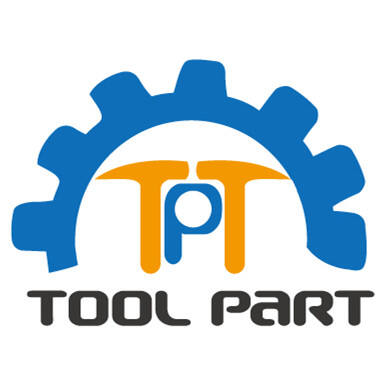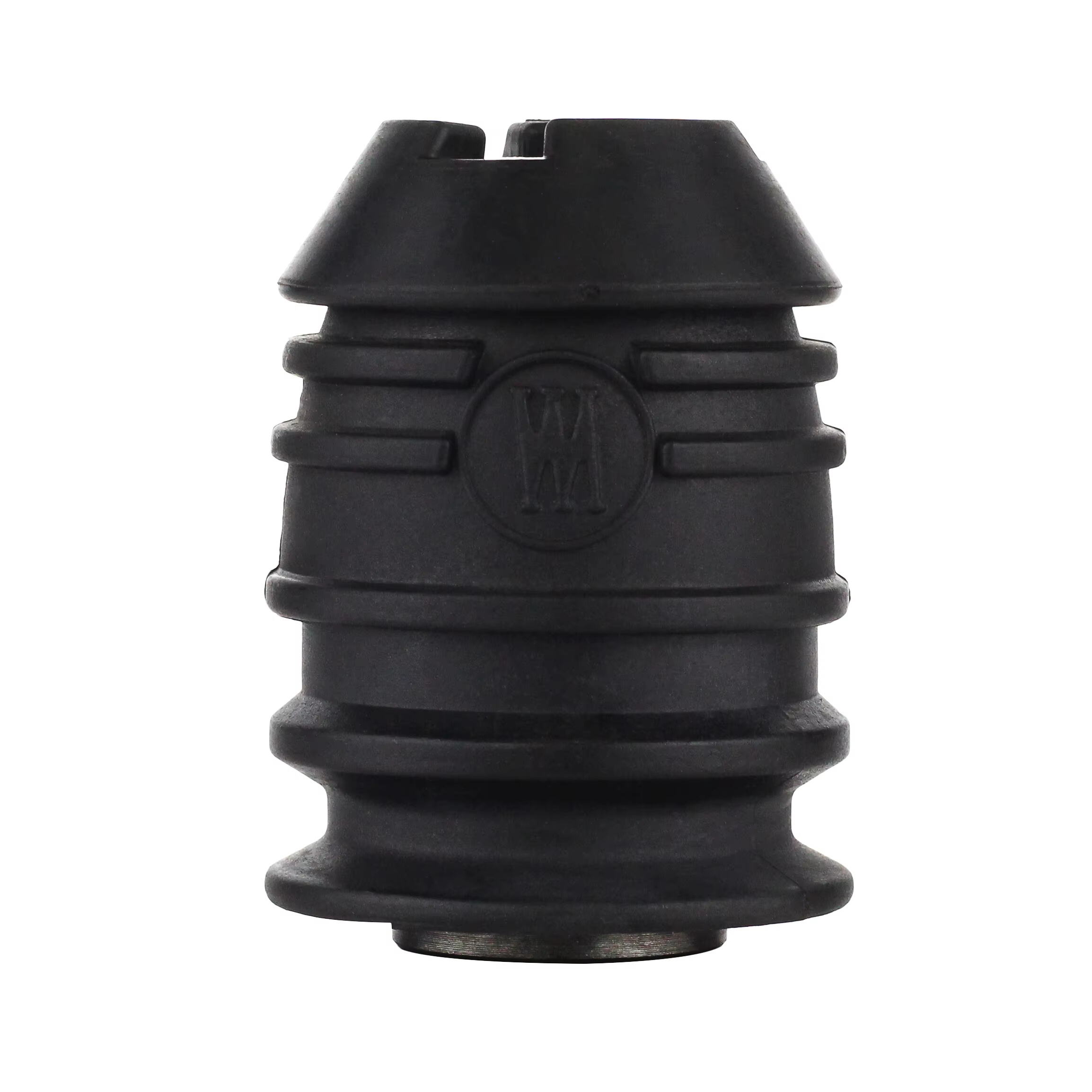היכרות עם בעיות מبدل אפקים
מה הם מתאמים ראש תופר?
מبدل אפקים הוא מאוד חשוב כשמתחילים לחשוב על ניקוד, כי הוא מקשר בין מערכות ניקוד שונות ועוזר לכלי לעבוד טוב יותר. בעיקרון, חלקים קטנים אלו מאפשרים לאנשים לעבור בין מגוון רחב של אפקים בעזרת מקשה חשמלית או אפילו סוגים מסוימים של לחיצות. זה הופך אותם למאוד שימושיים, בין אם מישהו עובד בפבריקה או רק מתקן דברים בבית מפעם לפעם. השוק מציע גם כמה סוגים שונים של מبدل אפקים. יש את הישנים שבהם צריך מפתח מיוחד לאיטום, את הדגמים החדשים ללא מפתח שפשוט מסובבים, וגם את הדגמים מסוג SDS שפותחו במיוחד למקשנים. כל סוג מתאימה ביותר לעבודות מסוימות, לכן חשוב לדעת איזה סוג מתאים לאיזה עבודה. ללא מبدل טוב, החורים ייצאו עקומים או חומרים ייפגעו במהלך תהליך הניקוד, בעץ, מתכת, פלסטיק - בכל משטח שנדרש ניקוד.
מדוע קורות בעיות עם הזמן?
אאטים לא נמשכים לנצח, במיוחד כששמים אותם במבחנים קשים. שימוש רגיל, חשיפה לסביבות קשות וטיפול לא נכון גובים בהדרדרות של רכיבים אלו לאורך זמן. מחקרים מצביעים על כך ששכיחות השימוש באדפטור ובאיזה תנאים הוא נמצא משפיעה רבות על משך החיים שלו. עובדים בסדנאות אפרניות או בסביבות תעשייתיות יגלו שהאאטים שלהם נשלפים מהר יותר מאלו שמתרגלים סביבה נקייה ומבוקרת. גם המספרים תומכים בכך - רבים שוכחים את תהליכי התפעול הבסיסיים, מה שממהר את תהליך ההרס. לכן, בדיקה תקופתית של האאטים וטיפול נכון בהם חשובים כל כך כדי להפיק את המקסימום מהם. הכרה בסיבות לנזק עוזרת מנהלי סדנאות למנוע כשלים לא צפויים וחליפות יקרות בהמשך הדרך.
אדפטור חיתוך בורר רפוי או רוטט
עקבות: התקנה לא נכונה או חלקים שנשאו
מתאמים של אביזרי קדחת נוטים לה afslap או לרטוט בעיקר בגלל שני דברים - התקנה שגויה וחלקים שפשוט נהיו ישנים מדי. כש מישהו אינו מטיל את המתאמים בצורה נכונה במהלך ההתקנה, נוצרות כל מיני בעיות בהמשך הדרך - בעיות יציבות וביצועים גרועים, במקרה הטוב ביותר. וכמו שכולם יודעים, ברוב המקרים המתאמים פשוט נבלים משימוש יומיומי. רכיבי המתכת מתקלקלים, הקפיצים מחלישים, והשיניים הקטנות בפנים מתחילות להישרר אחרי שנים של אחזקה בקצות. מה שזה אומר זה שהן כבר אינן יכולות להחזיק את מקצות הקדחת בצורה אמיצה, מה שגורם לרוטט ורטיט מעיק أثناء עבודה על פרויקטים. מומחי תיקון כלים יאמרו לכל מי ששואל שכדאי לעשות את זה נכון מהיום הראשון. השקעת חמש דקות נוספות כדי לבדוק את ההסדרה ודרישות הרגע בעת התקנת מתאם חדש תחסוך שעות של תסכול בהמשך.
תיקון: חזרה על הדבקה או החלפת חלקים שנחשלו
תיקון של אדפטור ראש חיתוך לא חסום כולל או חזרה על הדבקה או החלפת חלקים שנחשלו. הנהleitung צעד אחר צעד כדי להדביק מחדש את האדפטור שלך בצורה מאובטחת:
- כבה את המנוע והסיר את החיבור של החיתוך שלך.
- השתמש במפתח כדי לפתוח ולהדביק בחוזקה כל מרכיב.
- בדוק את החלקים עבור נזקים חזותיים.
כאשר חלקים מציגים ביטויי שחיקה או נזק גלוי, יש להחליף אותם ללא דיחוי. הקפידו על סימנים בולטים כמו כשלכידות החריצה מתחילות להחליק מחזיקות שלהן או כשיש רעש או ויברציה מוזרה שנוצרת מהכלי במהלך הפעלה – אלו אינדיקטורים ברורים לכך שהגיע הזמן להחליף את החלקים. חשוב מאוד להשיג חלפים באיכות טובה, וכן להחזיק בכלי הנכון בעדכון – סרגלי ברגים מדויקים נמנים עם הדרישות המרכזיות. דיחוי בהחלפת חלפים עלול להוביל לכל מיני בעיות בהמשך הדרך. לא רק שזה משפיע על רמת הדיוק בה ביצועי החריצה, אלא גם יוצר סיכונים אופייניים לבטחה שעל אף אחד לא ירצה להתמודד.
ראשיות ע.downcase תקועות במחזק
סיבות: שאריות, קרוש או חיזוק יתר
כשראשי החריצה תקועים במתאמים שלהם, לרוב יש איחוי של שפכים באחריות. פיסות מתכת ושבביים קטנים נוטים להצטבר בתוך אזור ה-צ'אק עם הזמן, וсоздים סוג של חסימה שמקשה על הכנסת או הוצאת הראש בצורה חלקה. שפשוף הוא גם בעיה נפוצה. הפנים של המותאם חייבים להישאר חלקים וטובים כדי שכולו יעבוד כראוי, אבל שפשוף פשוט מקלקל את המשטח הזה. וגם אל תישכחו מהצמצום המוגזם. לפעמים אנשים מברגלים חזק מדי על הצ'אק, מה שבעצם מחמיר את המצב מכיוון שהראש נתקע מול השפכים או השפשוף שכבר קיים שם. ידיעת הסיבות הנפוצות לבעיות האלה עוזרת המון כשמנסים להבין למה ראש חריצה לא זז.
תיקון: שמן והסרה בעדינות טכניקות
כשראשי החריצה תקועים, שימון פועל פלא ברוב המקרים. לְפַוֵּן מעט WD-40 או שמן מכונה רגיל מסביב למקום שבו הראש נוגע בצָ'ק. זה מפחית את החיכוך כך שהראש יוצא חלק יותר מאשר לנסות ולהוציא אותו בכוח. כדי להוריד את הראש ממקומו, תזדקקו לכפפות או לכלי ייעודיים meant למצב כזה בדיוק. תפעלו בזהירות, אף אחד לא רוצה לפגוע בצ'ק או בראש בזמן שפותרים את התקיעות. לפני שמתחילים כל פעולה, ודאו שהחרטום החשמלי כבוי לחלוטין ומתключен מהמתח החשמלי. תאונות קורות כשאנשים שוכחים של צעדים בסיסיים ב Безопק. ביצוע הצעדים הללו עוזר להאריך את חיי המחשב בין החלפות.
הרגלים של ניקוי תקפי
שמירה על ניקיון קבוע עוזרת למנוע הצטברות אבק ולשמור על מומרים של מקשה תפקודיאליים. לצורך קבלת תוצאות מיטביות, יש להשיג חומר זולה באיכות טובה ולהטיח אותו בפינות הקטנות שבהן שומן נוטה להסתתר. פעולה זו מסירה שאריות דביקות שיכולות להשפיע על תפקוד הרכיבים. אין להישכח מהכלים הקדומים יותר - cepes מסתובבים stubborn bits, ופיחות אבק באמצעות אוויר דחוס יכול לעשות פלאים. בנוסף, בזמן שאנחנו כבר בזירה הזו, אין לדלג על בדיקת סימני חלודה מדי פעם. שכבה דקה של סプレー הגנה יכולה להאריך משמעותית את חיי הרכיבים. כל תחזוקה זו אינה סתם עבודה מיותרת - היא אכן משפיעה על תפקוד הרכיבים מיום ליום.
מתאם לא מתאים לדריל
סיבות: גודל או סוג לאpatible
ההתאמה הנכונה בין אדapters לקבצי מקשה לקדחות לבין הקדחות עצמן היא חשובה מאוד כדי למנוע את כאב הראש של כלים שלא שבים במקומם. השוק מציע מגוון גדלים וסגנונות של אדapters האלה, שפותחו לעבודות שונות סביב המעבדה. ברוב המקרים נתקלים בבעיה כשמישהו תופס אדפטר שהוא גדול מדי לקבצי המקשה של הקדחה שלו או פשוט לא עובד עם המהירות או הכוח של הקדחה הספציפית שלו. אנחנו רואים את זה קורה כל הזמן - מישהו מנסה להכניס אדפטר גדול יותר על קבצי קטן יותר, או בוחר אחד שלא מסוגל להתמודד עם הגדרות הכוח של המכונה שלו. אנשים שעברו את הבלגן הזה לרוב מדגישים את חשיבות מדידת המידות נכון, כי גם אי התאמה קלה יכולה לגרום לבעיות אמיתיות בהמשך, החל מהתוצאות הגרועות וכלה ב hư פגומים
תיקון: התאמת המותג לדרישות הבור
לפני שמביאים בחשבון התקנת אדפטר, בדיקה של סוג החרט הנמצא בשימוש שונה לחלוטין את התוצאה. דברים כמו נפח החרט, המהירות של החרט, וסוג העבודה שמתבצע יכוון אותנו לבחירת האדפטר הנכונה. יצרני כלים רבים מציעים עצות טובות באשר לאדפטר המתאים ביותר לעבודה, ולכן מעקב אחרי ההנחיות הללו עוזר למנוע בעיות עתידיות. גודל סטנדרטי של 3/8 אינץ' ו-1/2 אינץ' מתאים לאדפטרים רבים, אך שווה תמיד לבדוק את המנואל או דף המפרט של החרט כדי לוודא. בחירה נכונה תאפשר ביצועים טובים יותר ותשמור על כלי העבודה לתקופה ארוכה יותר, ללא בלאי מיותר.
איך לוודא תאימות
בדיקה אם האדapters עובדים היטב עם מקשים שונים חוסכת כסף ומניעה נזק לציוד יקר. רוב היצרנים מספקים תבניות או דוחות שמציגים אילו שילובים באמת עובדים יחד. אנשים בעלי ניסיון בתחום תמיד מדגישים כמה חשובות הבדיקות האלה, כי כשמשהו לא תואם, הדברים פשוט לא פועלים חלק ותקלות מתרחשות בתדירות גבוהה יותר. השקעת הזמן בבדיקה שכל הרכיבים תואמים בצורה נכונה פירושה הגנה על הכסף שהושקע בציוד הקדוח, וכן תפעול חסר הפרעות. חברות שממשיכות את זה לתוך תהליכי העבודה הרגילים שלהן נוטות לגלות שהן משקיעות פחות זמן בפתרון בעיות ויותר זמן ביצוע עבודה אמיתית.
סימני היזדקנות במתגמי תקיעת החורבות
זיהוי רכיבים שנשחקו
לדעת מתי חלקים של אדפקט דליון מתחילים להתפרק חשוב מאוד כדי לקבל תוצאות טובות ולהישאר בטוח בזמן העבודה. תתחילו לחפש מסביב סימנים ברורים שמשהו לא בסדר כמו סדקים, כתמי חלודה, או אם כל הדבר מרגיש רועד כשמסתובבים. רוב האנשים מבחינים בבעיות כאשר חתיכות לא נשארות מאובטחות יותר או שהם מבחינים שבריחות קטנות שפת השיער מתפתחות. האמת היא, שהמעגלים האלה לא נמשכים לנצח במיוחד כשמנסים את הקצב שלהם כל הזמן. מחקרים מראים כי ריצה במהירות גבוהה מאוד מנגזרת אותם מהר יותר מהרגיל. לכן לבדוק אותם באופן קבוע הגיוני. לזהות בעיות קטנות לפני שהן הופכות לכאבי ראש גדולות חוסך כסף בטווח הארוך ושומר על כלי עבודה עובדים כראוי לתקופות ארוכות יותר בין החלפות.
טיפים לשימור מונע
תפעול שגרתי על מקלות אביזרי קדחת היא ההבדל האמיתי כשמטרתם להאריך את חיי השימוש ולתפוס בעיות לפני שהן הופכות לחserious. ברוב החנויות, בדיקה וניקוי של האביזרים פעם בחודש היא מספקת, במיוחד כשיש שימוש יומיומי במקדחות. cep brush רך ביחד עם סבון קל ינקה את האבק והשומן שצוברים לאורך הזמן ומקשים על תפקוד תקין. לאחר ניקוי מעמיק, הוספת שמן תורמת להפחתת החיכוך שמע worn את החלקים לאורך זמן. חלק מהאנשים ממליצים על מותגים מסוימים של שמן מקלות קדחת וטוענים שהוא מונע wearing טוב יותר. עמידה בתכנית תפעול בסיסית תשמור על תפקוד חלק ותחסוך כסף לאורך זמן, מכיוון ששילוב של חלקים worn פירושו תיקונים יקרים או קניית ציוד חדש לגמרי.
מתי להחליף לעומת לתקן
ההחלטה אם להחליף או לתקן את המחברת של הרימר תלויה בעיקר בשיקולים הכלכליים וביעילות הפעולה. כאשר המחברת מתחילה להציג בעיות חמורות כמו החלקה מתמדת או סדקים גדולים, רוב האנשים פשוט מחליפים אותה, שכן תיקון של בעיות אלו אינו שווה את הסיכון או המאמץ. לעומת זאת, בבעיות קטנות יותר, כמו שפשוף על פני השטח או סדקים זניחים, לרוב בוחרים לתקן, שכן עלויות התיקון נמוכות יותר. טכנאים מנוסים ממליצים לעקוב אחרי משך השירות של המחברות לפני שהן דורשות טיפול. בתנאים רגילים, ניתן לצפות בשירות של שלוש עד חמש שנים. יש להשוות בין עלות הזמן הפנוי שנוצר עקב החלק המנוקה לעומת עלויות התיקון או ההחלפה. החלטה מושכלת מסוג זה עוזרת לשמור על תהליך העבודה חלק ללא הוצאות מיותרות.
שאלות נפוצות
- איזה סוגי אדפטורי תופת חיתוך זמינים? ישנם מספר סוגים כמו עם מפתח, ללא מפתח ו-SDS אדפטורים, כל אחד משמש מטרות שונות.
- איך אני יכול לתקן אדפטור חלקי בורר רפוי או רוטט? אתה יכול לאחד את האדפטור מחדש או להחליף חלקים שנש Wrath לשחזר יציבות.
- איך אני מטפל בחלקי בורר נעולים? הפעלת שמן תזוזה והשתמשון בטכניקות הסרה עדינות יכול לפתור את הבעיה בצורה יעילה.
- איך我可以 למנוע בעיות התאמת א답טר עם בוררים? תמיד התאם את מפרטי האדפטור למפרטים של הבורר כדי להימנע מכל בעיות תאימות.
- מתי צריך להחליף את אדפטור החוג הבורר? החלפה מומלצת כאשר יש נגיעה משמעותית כמו חתכים עמוקים או החליפה מתמשכת.

